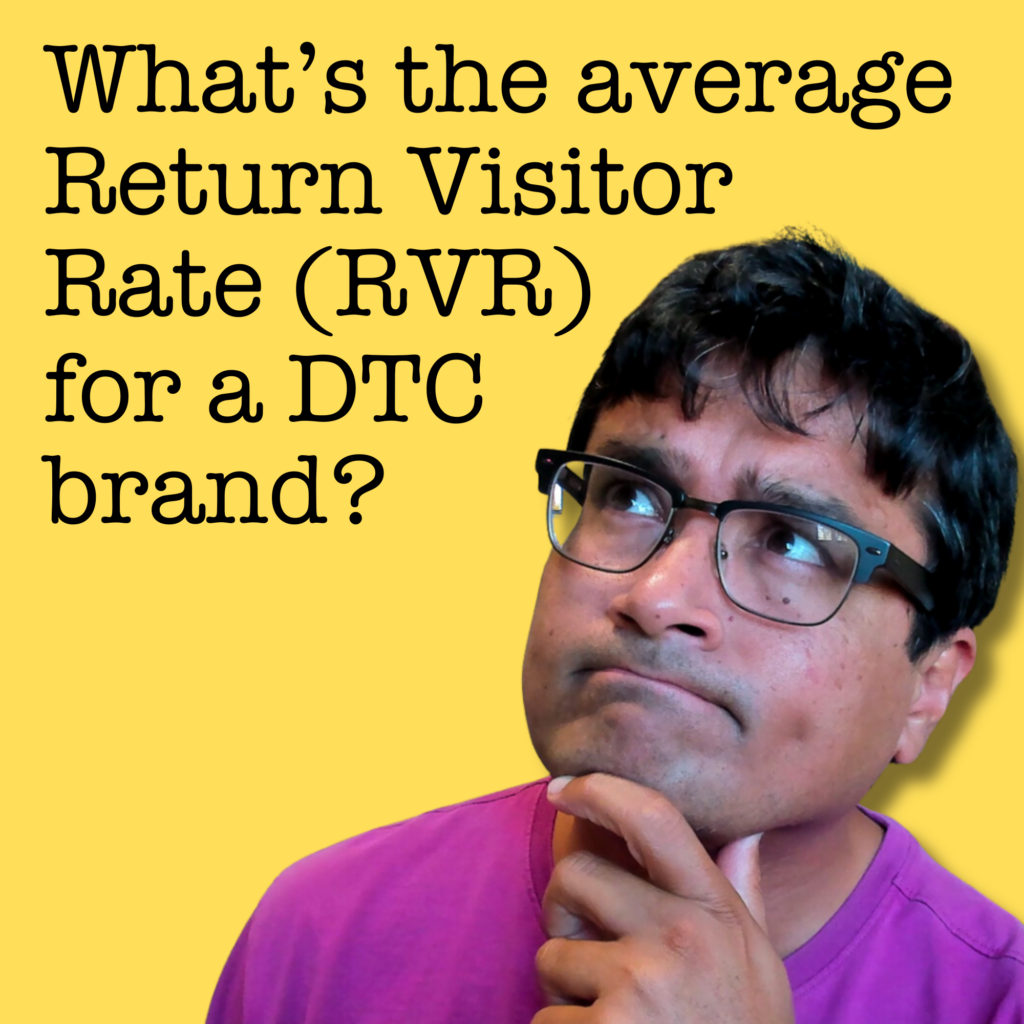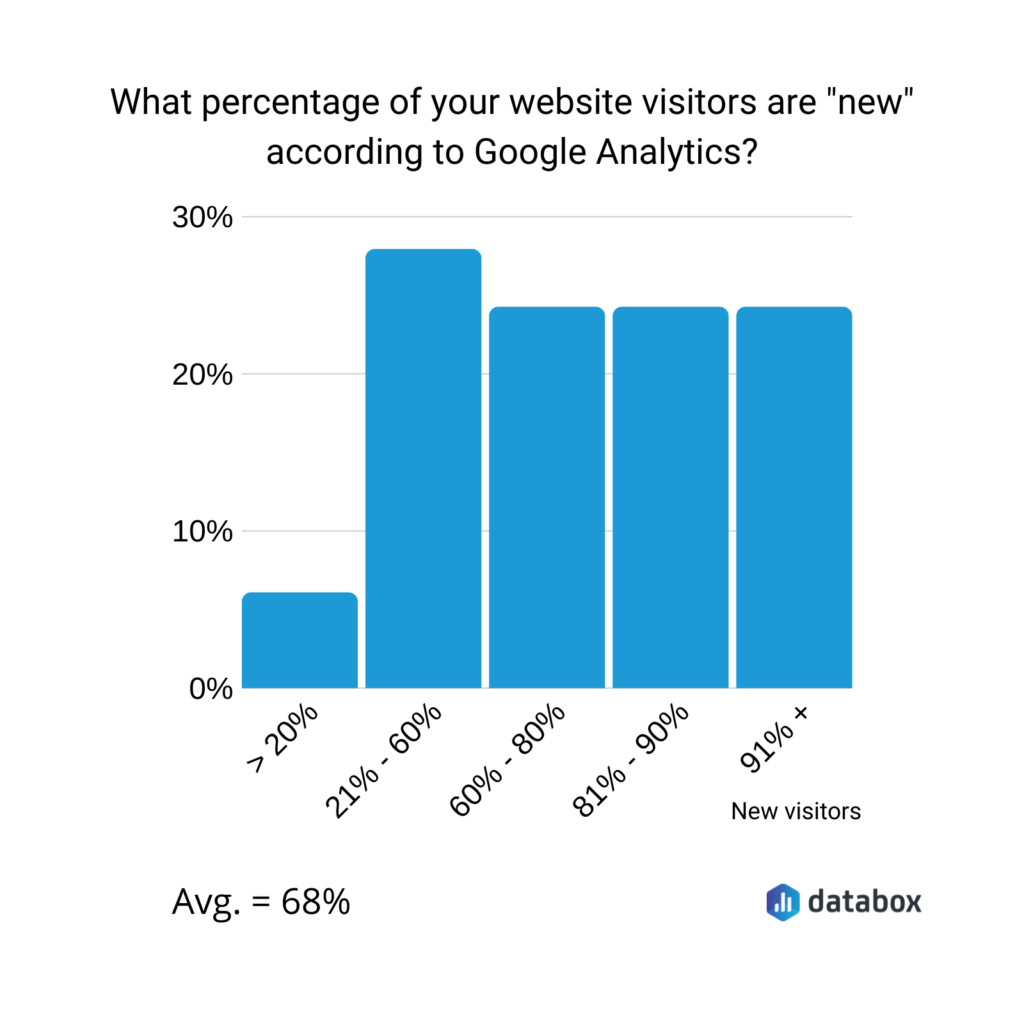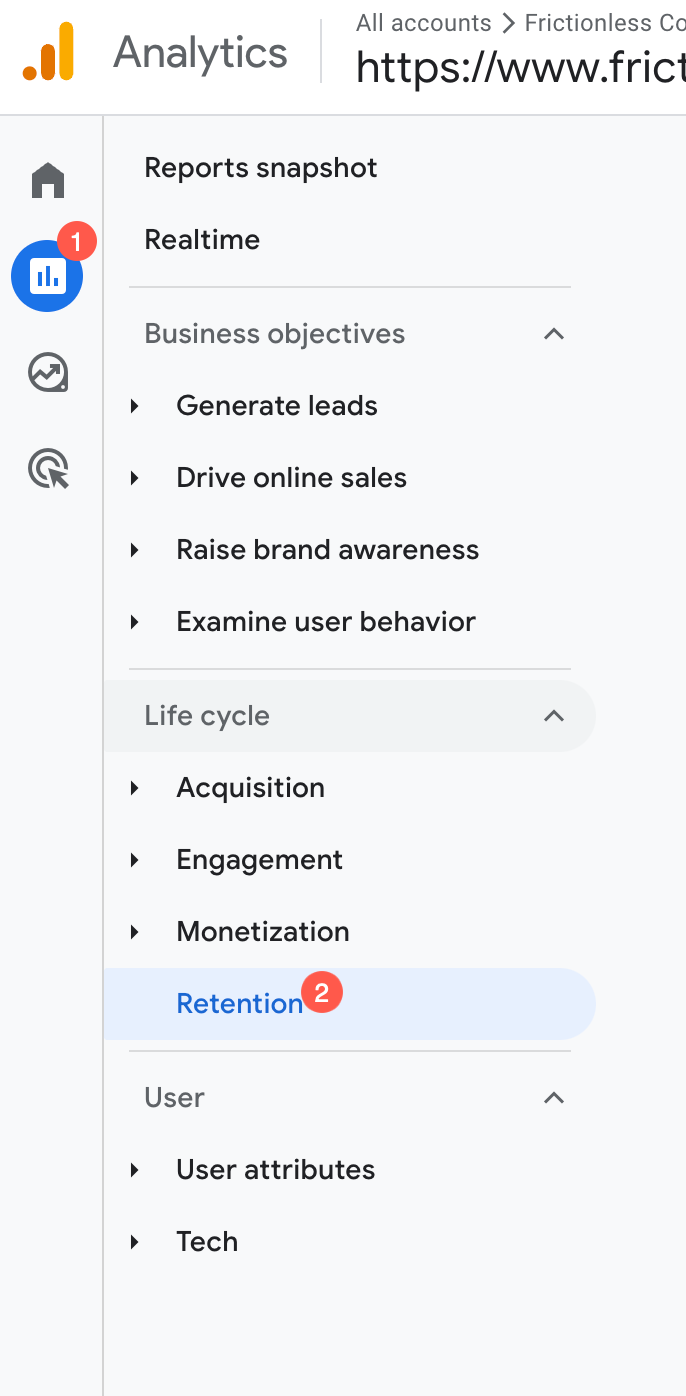Blog
Average Return Visitor Rate (RVR) for DTC and Why It Matters
Over the years, I’ve done a lot of Google searches for phrases that relate to helping me find a number for the acceptable visitor return rate for an eCommerce website.

I have tested dozens of permutations and combinations of this search term.
The best data I have found was not even about the Return Visitor Rate (RVR) for DTC was actually for the opposite: new visitors to a website.
Databox surveyed marketers. They found that, on average, 68% of site visitors are new visitors (source).

Working backward, you will find that the calculated return visitor rate would be 100% minus the number shown by the Databox survey, which is 64%.
Giving a return visitor rate—or RVR—of 36%.
I have been working on conversion optimization for e-commerce businesses for the last 15 years, and I can tell you that a return rate of 36% is astronomically high. I have never encountered it on a client website.
The typical return rate I see on my client sites is between 15% and 22%.
Don’t take my word for it; go to your Google Analytics, pick a six-month time period, and make these two selections (1 and 2 in the screenshot below):

It’ll show how many visitors are new and how many are returning.
Divide the “Returning Users” number by the “New Users” + “Returning Users” number to see your overall return visitor rate.
Does This Metric Even Matter?
If you are a marketer who is trying to reduce your ad spend or increase your return on ad spend (ROAS), then this average Return Visitor Rate (RVR) for DTC does matter. It sheds light on the fact that most visitors to a website never return.
Add to this the fact that pay-per-click (PPC) advertising converts at a rate of 2.35% (source), and you start to see why this is a problem.
This makes it clear that we need to build a conversion strategy that is singularly focused on driving conversions on the first visit.
Your Average Return Visitor Rate (RVR) matters because it forces purging and prioritizing.
Over time, our sites accumulate a lot of unnecessary stuff.
Ditch the nice-to-have ones to double down on the core ones.
Make a clean argument for why visitors should end their search and buy your solution today.
Average Return Visitor Rate (RVR) for DTC is The Tide That Raises All Boats
By becoming efficient at managing the first visit, not only are we improving the chances of a purchase on this visit, we’re also giving those not ready to buy today a compelling reason to join your mailing list and respond to our retargeting ads.
Where are all these extra conversions (purchases, email signups, purchases via retargeted ads) coming from? From the massive pool of visitors who were previously leaving without taking any action.
Are You a Marketer?
I suspect you are because a topic like the Average Return Visitor Rate (RVR) for DTC could only appeal to a marketer.
And if you are a marketer and liked this article, boy, do I have something fun for you.
Revealing It All
In our marketing lab 🥼, experimenting 🧪 for the last 15 years, we’ve discovered that one reason marketing campaigns fail is because they try to do too much.
Once they’ve consumed your pitch, prospects can be placed in 1 of 3 groups:
— Ready to buy
— Will never buy
— Interested, but need a little more convincing
The 3rd group has the biggest revenue potential.
Evidence Our Formula Works
This strategy mentioned above isn’t a theoretical framework. It’s the base formula for all our conversion work for clients. This marketing framework can be used to boost sales for sports products. To sell skincare products. Pet products. Consumer electronics. Athletic gear. Back pain solutions. Food items. High-end cooking tools.
Does the sales pitch always need to be shown as a popup? Nope.
It can also convert cold Facebook ad traffic, improve mobile conversion rates, generate calls, optimize your most important landing page, etc.
It can even be used to improve your overall conversion rates.
Converting Interested, but Need a Little More Convincing Group (With Examples)
Explained in this nine truths article.



